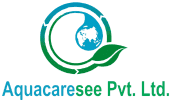We bring a distinguished collection of RO Plant that is broadly used for abundant drinking water applications in the industry. This water plant is manufactured using fine quality components and the latest technology by our skilled professionals. Our provided water plant is available in several sizes and shapes that are as per the requirements of our clients. Along with that, offered water plant is availed to our customer at reasonable rates.
Reverse Osmosis Working Principle
Reverse Osmosis is carried out using RO semipermeable membrane which acts as a filtration physical barrier. The pressure greater than the osmotic pressure is developed on one side of the solution. The impurities like salts are retained on the membrane and taken forward for further process. During the process two outlets are generated one is called permeate and another is reject water. Reverse osmosis takes place when the solvent passes through the membrane against the concentration gradient. It moves from a lower to a higher concentration.
What is Reverse Osmosis?
Reverse Osmosis is a membrane filtration process to remove dissolved solids from the water. It is mostly used in drinking water treatment by eliminating salts and other constituents. Nowadays the technique is widely used to purify water for industrial, residential, and commercial purposes.
Stages in Reverse Osmosis
Pre Filtration : In prefiltration two stages are Sediment filter & Carbon Filter. The Sediment filter removes Dust, Suspended matter, rust, etc present in the water & Carbon filter eliminates the Volatile suspended Solids (VOCs), Chlorine, and odour.
Reverse Osmosis Membrane
A Reverse Osmosis system is dependent upon and built around its individual membranes. Each membrane consists of a spiral-wound sheet of a semipermeable material, which varies dependent on application. Membranes are available in 2-inch, 4-inch, and 8-inch diameters with the 4-inch and 8-inch diameter size most commonly used in the water treatment industry.
Stages in Reverse Osmosis
Pre-Filtration
The pre-filtration stage is divided into two essential processes:
- Sediment Filter: This filter effectively removes physical impurities such as dust, suspended particles, rust, and other debris present in the water.
- Carbon Filter: Designed to target chemical contaminants, the carbon filter eliminates Volatile Organic Compounds (VOCs), chlorine, and unpleasant odors, enhancing water quality before it reaches the RO membrane.
We bring a distinguished collection of RO Plant that is broadly used for abundant drinking water applications in the industry. This water plant is manufactured using fine quality components and the latest technology by our skilled professionals. Our provided water plant is available in several sizes and shapes that are as per the requirements of our clients. Along with that, offered water plant is availed to our customer at reasonable rates.


What is Reverse Osmosis?
Reverse Osmosis is a membrane filtration process to remove dissolved solids from the water. It is mostly used in drinking water treatment by eliminating salts and other constituents. Nowadays the technique is widely used to purify water for industrial, residential, and commercial purposes.
Stages in Reverse Osmosis
Pre Filtration : In prefiltration two stages are Sediment filter & Carbon Filter. The Sediment filter removes Dust, Suspended matter, rust, etc present in the water & Carbon filter eliminates the Volatile suspended Solids (VOCs), Chlorine, and odour.
Reverse Osmosis Membrane
A Reverse Osmosis system is dependent upon and built around its individual membranes. Each membrane consists of a spiral-wound sheet of a semipermeable material, which varies dependent on application. Membranes are available in 2-inch, 4-inch, and 8-inch diameters with the 4-inch and 8-inch diameter size most commonly used in the water treatment industry.
Reverse Osmosis Working Principle
Reverse Osmosis is carried out using RO semipermeable membrane which acts as a filtration physical barrier. The pressure greater than the osmotic pressure is developed on one side of the solution. The impurities like salts are retained on the membrane and taken forward for further process. During the process two outlets are generated one is called permeate and another is reject water. Reverse osmosis takes place when the solvent passes through the membrane against the concentration gradient. It moves from a lower to a higher concentration.
Applications
- Food and Beverage Industry: Ensures purified water for production processes.
- Dairy Products: Used in milk processing and related operations.
- Paper and Pulp Industry: Facilitates water treatment in manufacturing processes.
- Textile Industry: Essential for dyeing, coloring, and pigment applications.
- Printing and Coating Facilities: Supports water quality for precise coating and plating work.
- Surfactant Industry: Aids in the production of detergents and related products.




